Research Scholar
Facial Emotion Lab
University College London,
England, United Kingdom
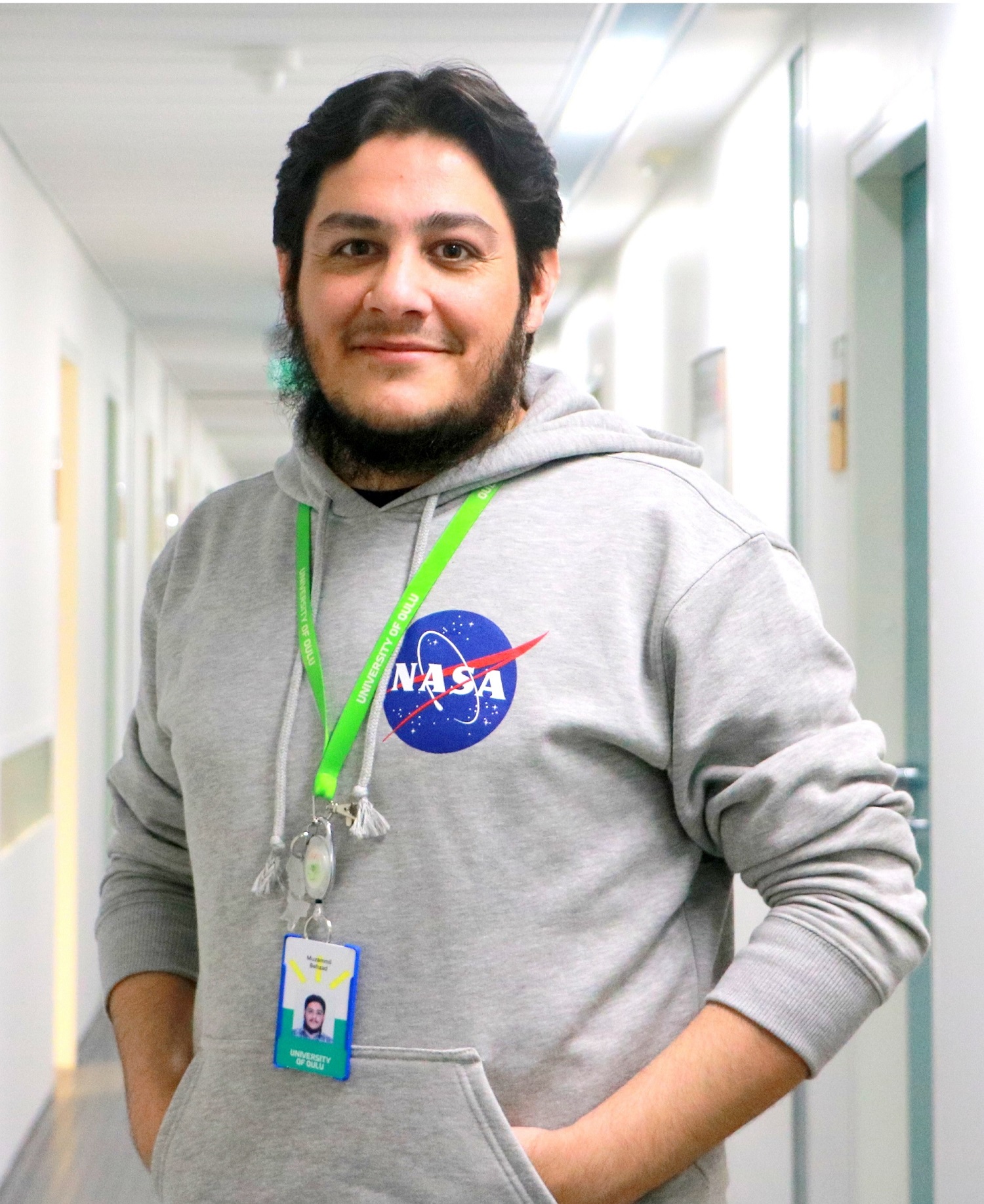
I am an AI Scientist at Silo AI (Finland), and a researcher at the Center for Machine Vision and Signal Analysis in the University of Oulu (Finland), where I also completed my PhD (with distinction) in 2022 with Academy Professor Guoying Zhao. Prior to that, I received my partially-funded B.S. degree (with distinctions - double medalist and valedictorian) and fully-funded M.S. degree, both in Electrical Engineering, from COMSATS University Islamabad (Pakistan) and King Fahd University of Petroleum & Minerals (Saudi Arabia), in 2013 and 2017, respectively. I worked as a visiting research scholar in the University College London (UK), Brown University (USA), and King Abdullah University of Science & Technology (Saudi Arabia). I have also held full-time academic positions in Pukyong National University (South Korea), and COMSATS University Islamabad (Pakistan). My research interests lie in signal and image processing, embedded systems, machine/deep learning and computer vision.
Facial Emotion Lab
University College London,
England, United Kingdom
Center for Machine Vision and Signal Analysis,
University of Oulu,
Oulu, Finland
Inst. for Comput. & Exper. Research in Mathematics,
Brown University,
Providence, United States
Institute of Industrial Science and Technology,
Pukyong National University,
Busna, South Korea
Department of Computer Engineering,
COMSATS University Islamabad,
Islamabad, Pakistan
CEMSE Division,
King Abdullah University of Science & Technology,
Thuwal, Saudi Arabia
Department of Electrical Engineering,
King Fahd University of Petroleum & Minerals,
Dhahran, Saudi Arabia
Department of Computer Engineering,
COMSATS University Islamabad,
Islamabad, Pakistan
Center for Advance Studies in Telecommunication,
COMSATS University Islamabad,
Islamabad, Pakistan
Ph.D. in Technology
University of Oulu,
Oulu, Finland
Exchange Student in 'Computer Vision'
Brown University,
Providence, United States
M.S. in Electrical Engineering
King Fahd University of Petroleum & Minerals,
Dhahran, Saudi Arabia
B.S. in Electrical Engineering
COMSATS University Islamabad,
Islamabad, Pakistan
Intermediate in Pre-Engineering
Islamabad College for Boys,
Islamabad, Pakistan
Matriculation in Science
Islamabad College for Boys,
Islamabad, Pakistan
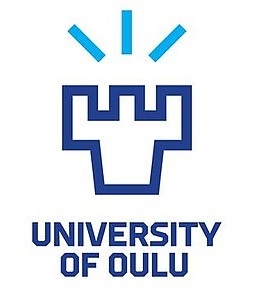
In regard of my prior achivements, I have been awarded fully-funded Ph.D. in Technology in the prestegious Center for Machine Vision and Signal Analysis (CMVS) at University of Oulu, Oulu, Finland. It is a research-based doctoral degree at the Faculty of Information Technology and Electrical Engineeing (ITEE).
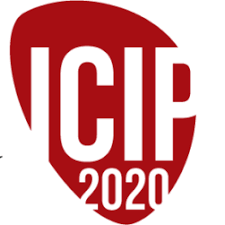
Three Minute Thesis (3MT®) is a research communication competition developed by The University of Queensland (UQ) which challenges research higher degree students to present a compelling oration on their thesis and its significance in just three minutes in language appropriate to a non-specialist audience. I am pleased to share that I have won this competition at the prestigious IEEE International Conference on Image Processing (ICIP 2020) - a premier conference on image processing. After giving a live presentation about my PhD thesis in under 3 minutes, I have been selected as the winner by the respected judges among candidates from all around the globe. [Award Certificate] [Link].
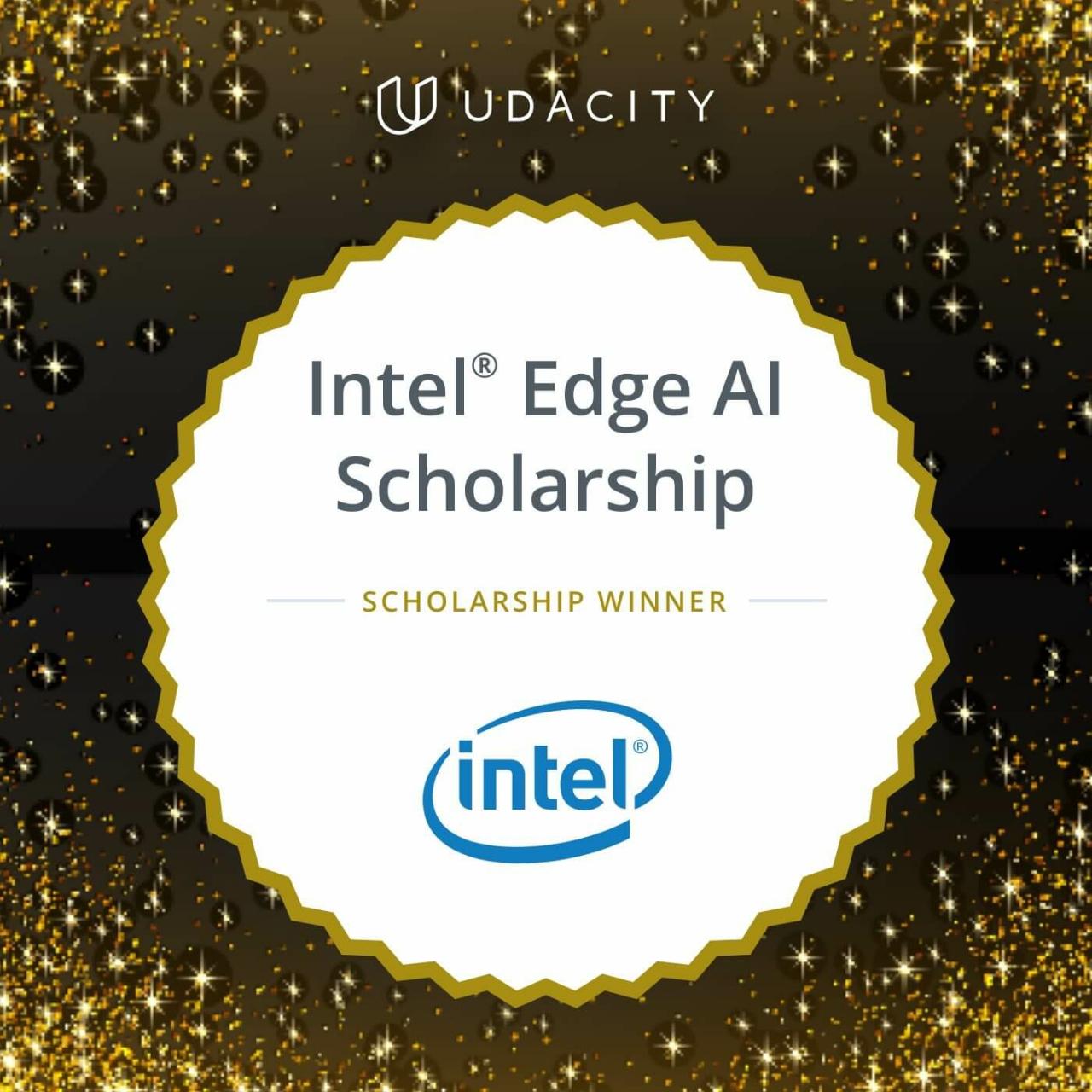
Thanks to Udacity and Intel Corporation for this amazing opportunity of selecting me for the Intel® Edge AI Scholarship Program.
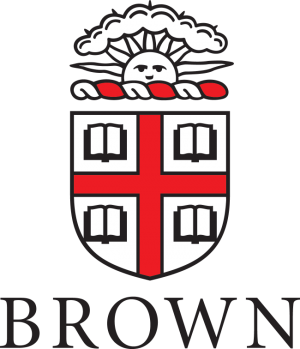
I spent a fully-funded exchange research semester in the prestegious Institute for Computational and Experimental Research in Mathematics (ICERM) at Brown University, Providence, Rhode Island, United States. It is a semester program on 'Computer Vision' having PhD students, Post-Docs, Professors and industrial giants from renowned places like MIT, Stanford University, Harvard University, Google DeepMind, Microsoft, etc.
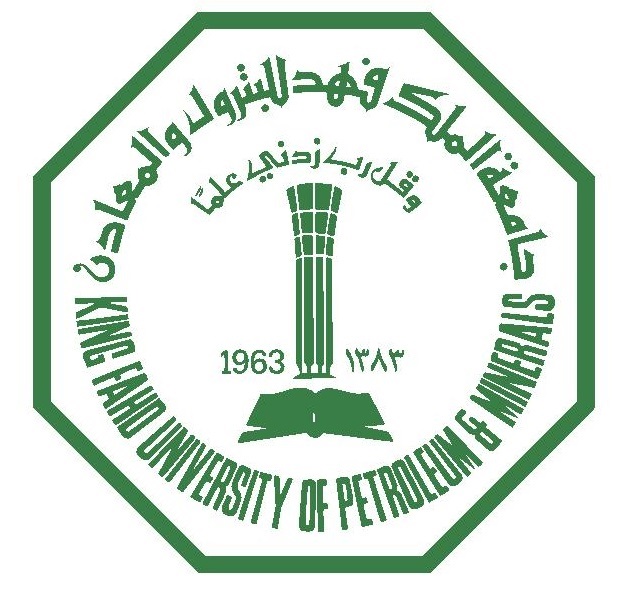
In regard of my prior achivements, I had been awarded fully-funded M.S. in Electrical Engineering at King Fahd university of Petroleum & Minerals (KFUPM), Dhahran, Kingdom of Saudi Arabia (KSA). It was a fully-funded 2 years research-based degree at the Department of Electrical Engineeing, KFUPM.

I was awarded Institute and Campus Silver Medals by the President of Pakistan at the convocation for my outstanding achievements in B.S. Electrical Engineering 2009-2013, at COMSATS University Islamabad (CUI), Pakistan. Campus Silver Medal was awarded to me for grasping second top position in my batch of Electrical Engineering (2009-2013) throughout the respective campus, while Institute Silver Medal was awarded to me for clutching second top position among different campuses of CUI in Pakistan. The certificate can be found here.

An HP 1000 laptop [Specs: Intel® Core™ i3-2370M Processor (2.4 GHz, 3MB L3 Cache)] was awarded to me by Government of Punjab, Pakistan for my outstanding career track during my Bachelors, B.S. Electrical Engineering, at COMSATS University Islamabad (CUI), Pakistan. I was invited to meet the Minister of Pakistan and receive my award. I was also paid the guard of honor by Punjab Police Task Force and was then awarded with the laptop. The certificate can be found here.

I participated in a National Level Line Tracking Robotics Competition ROBIAN'12 organized by Department of Electrical Engineering, COMSATS University Islamabad (CUI), Islamabad Campus, Pakistan. I successfully designed and made a Robot. There were 42 Robots which participated in the event. My Robot 'ALPHATRON' got runner up position by completing the requirements (tracking arena sooner by going through the specified checkpoints) with second fastest speed. I was awarded with Runner Up Shield, Prize Money and Certificates by the university. The certificate can be found here.
Camera caught moments are below:
ROBIAN 2012 Final Battle - ALPHATRON (Runner Up)
ROBIAN 2012 Award Ceremony - ALPHATRON (Runner Up)
ROBIAN 2012 Practice Full Arena Tracking- ALPHATRON (Runner Up)

I was selected for Talent Award by an NGO, SAFE, for my remarkable triumph and Position in my starting semester during my B.S. Electrical Engineering 2009-2013, at COMSATS University Islamabad (CUI), Pakistan. I was awarded with a Shield and Certificate in the event organized by SAFE, the NGO. I was also been given prize money merit scholarships in a number of semesters, during my Bachelors, by CUI for securing top positions throught my batch. The certificate can be found here.
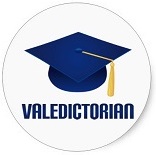
I was awarded with the honor of presenting the Convocation Graduation Speech of my batch 2009-2013 of COMSATS University Islamabad (CUI). After an event of competitions among top position holders of different departments for the Valedictorian speech, I was finally selected and bestowed with the honor of presenting this graduation speech. The video of my graduation speech along with my other accomplishments can be watched below:
Engineer Muzammil Behzad - 4 Year Achievements and Blessings

In recognition of my services as project supervisor/advisor at COMSATS University Islamabad (CUI), Pakistan, I had been given the Best Project Award (Supervisor) for supervising a Master of Computer Science (MCS) student under the project title "Designing an algorithm in C/C++ language for serial communication between two microcontrollers using simulation and compilation tools". The certificate can be found here.
Copyrights © Muzammil Behzad. All rights reserved.
I mainly do research at the intersection of classical signal and image processing and traditional machine learning to advanced deep learning approaches. The projects I have done motivate business in a number of applications such as in the bio-medical sector, security sector, business sector, education sector, and vision-based industries.
Prof. Dr. Guoying Zhao has supervised my Ph.D. in Technology at CMVS in University of Oulu, Finland. This thesis focused on analysis and recognition of 4-dimensional microexpressions using advanced deep learning.
Prof. Dr. Tareq Y. Al-Naffouri supervised my M.S. thesis in Electrical Engineering at KFUPM, Dhahran, Saudi Arabia. The thesis was related to compressive sensing based collaborative patch-based image denoising algorithms.
Prof. Dr. Mahmood Ashraf Khan supervised my B.S. final year project (FYP) at CUI, Islamabad, Pakistan. The project was about design and development of a real-time vehicle tracking system via GPS and GSM.
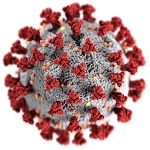
To further help combat the corona virus (COVID-19), this project can be used for real-time face mask detection using webcam with an impressive accuracy. For convenience, the source codes are shared both in MATLAB and Python in my GitHub repo.
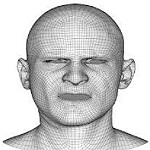
This project proposes a novel 4D Facial Expression Recognition (FER) method using Collaborative Cross-domain Dynamic Image Network (CCDN). Given a 4D data of face scans, we first compute its geometrical images, and then combine their correlated information in the proposed cross-domain image representations. The acquired set is then used to generate cross-domain dynamic images (CDI) via rank pooling that encapsulates facial deformations over time in terms of a single image. For the training phase, these CDIs are fed into an end-to-end deep learning model, and the resultant predictions collaborate over multi-views for performance gain in expression classification. Furthermore, we propose a 4D augmentation scheme that not only expands the training data scale but also introduces significant facial muscle movement patterns to improve the FER performance. Results from extensive experiments on the commonly used BU-4DFE dataset under widely adopted settings show that our proposed method outperforms the state-of-the-art 4D FER methods by achieving an accuracy of 96.5% indicating its effectiveness.


For this project, I worked (Matlab 2018b) on fine-tuning the final fully-connected layers of AlexNet (a 5 Convolutional and 3 Fully Connected Layers CNN trained on ImageNet of 1000 different classes with 227x227 color images). The final layers of AlexNet was retrained on 1000 sample images of 10 different subjects each (both male and female, and from different countries). The input image was first pre-processed to detect faces by Viola–Jones detector based on which the training images were cropped and fixed to 227x227, as AlexNet expects. After one hour of training (on a 64-bit Intel(R) Core(TM) i7-7700HQ CPU @ 2.80GHz (8 CPUs) processor machine with NVIDIA GeForce GTX 1050 graphic card, and 12GB RAM), the model was tested on live videos by using a webcam. This demo shows the performance of the AlexNet based facial recognition on a live webcam video using faces detected from the boundary-boxes of Viola–Jones detector.

For this project, I worked (Python 3.5, TensorFlow, Keras, Anaconda, Spyder) on fine-tuning the final layer of the pre-trained model ResNet-50 v3-fp32 using the CIFAR10 dataset (60,000 32x32 grayscale images in 10 classes, 6000 images/class) to get Training/Testing/Cross Entropy accuracy of 87.05%/86.75%/0.43, 38.92%/34.65%/1.48 and 16.40/15.84%/1.99 at 10,000. 1,000 and 100 iterations, respectively.
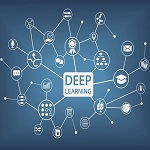
For this project, I worked (Python 3.5, TensorFlow, Keras, Anaconda, Spyder) on importing the Fashion MNIST dataset (70,000 28x28 grayscale images in 10 categories), training, exploring and pre-processing the data, building and training a neural network model (Layers: 28*28 - 128 - 10, Parameters: 5 Epochs, traning size = 60,000) with training accuracy of 89.03% and testing accuracy of 87.06%. Performance parameters were later visualized by using the TensorBoard.


For this project, I worked (Python 2.7 with NumPy, SciPy, Matplotlib, Scikit-learn, Skimage, Anaconda, Jupyter Notebook) on designing a multi-modal emotion recognition system to recognize happy versus sadness expressions (binary-class problem) by using the feature-level method to combine the facial expression features and audio features. Extracting the subspace for facial expression feature and audio features using Principal Component Analysis (PCA) and Canonical Correlation Analysis (CCA). Then fusing the features, and finally training a linear binary-class SVM. Accuracy of 98.21% and 92.31% was achieved.

For this project, I worked (Python 2.7 with NumPy, SciPy, Matplotlib, Anaconda, Jupyter Notebook) on extracting prosodic correlates and cepstral features from speech recordings which are simulated emotional speech (i.e. acted) from ten speakers speaking five different pre-segmented sentences of roughly 2-3 seconds in two different emotional states (happy and sad) totaling 100 samples. The data was resampled, pre-emphasized and then visualized prior extracting the basic Prosodic and Mel-Frequency Cepstral Coefficients (MFCC features). SVM (polynomial kernel), Random Forest and Neural Network (three hidden layers of 50 units each with 20,000 iterations) classifiers were trained and evaluated to get accuracy of 86.21%, 88.31% and 90.35%, respectively.

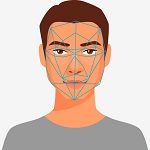
For this project, I worked (Python 2.7 with Skimage, NumPy, Matplotlib and DLib, Anaconda's Jupyter Notebook) on extracting a sub-set (100 samples) of eNTERFACE dataset (acted facial expressions from 10 actors with happy and sadness classes). Face preprocessing was performed to detect face and facial landmarks via DLib library, followed by face regsteration to a set of fixed landmarks from a standard model, and then extracting face from the registered image. LBP features were then extracted to train a binary-SVM classifier. Accuracy (reached 72.25%) and confusion matrix were computed to evaluate the performance.


Many computer vision applications assumed that the image/videos received are clean and can be used in its received form for real-time applications. However, many videos usually suffere from a number of degradations during the acquisition phase. One of the most common form of visual degradation is that of snow and rain which can hinder the visibility, for example, for a driver-less autonomous vehicle where clear visual input is extremely important. Therefore in this project, a video deraining and desnowing algorithm was designed to be able to remove the rain streaks from the input. Since the real-time applications asks for a faster processing, the algorithm was designed by reducing its computational desires to be able to used as a real-time fast desnowing algorithm. The designed algorithm mainly works on collecting the patches from neighbouring frames (temporal similarities) and implementing a weighted avergae approach over various channels thereby exploiting both the inter-frame as well as inter-channel correlation. The clean videos obtained as a result of this algorithm demonstrate it superiority.


In this thesis, we propose novel patch-based image denoising algorithms to take care of the undesired additive white Gaussian noise (AWGN) components introduced in an image. Our algorithms are broadly classified into grayscale and color image denoising. We propose to utilize normalized Euclidean distance and correlation based grouping of patches in our algorithms. Such grouping of patches is an effective way for collaborative support-agnostic sparse reconstruction to denoise a noisy patch. For the collaboration, we stack similarly structured patches via distance and correlation based intensity-invariant approach. The key idea is that since similar patches share the same support in the transformed domain, these supports can be used as probabilities of active taps to refine the sparse estimates. This ultimately yields a very good patch estimate and therefore increases the quality of recovered image by discarding the noise-causing components. For the smooth regions of an image, a specially developed post-processor is then applied to further increase the quality of the denoised image. Comparison results from extensive simulations against the existing state-of-the-art algorithms in terms of PNSR and SSIM over a wide range of scenarios demonstrate the superiority of our proposed algorithms.


It is a vehicle tracking system in which vehicles are tracked and controlled through a mobile phone just by sending an SMS. To trace the location of the car the owner of the vehicle simply sends an SMS to the tracking system installed in the vehicle. The tracking system in the vehicle contains a GPS receiver module and a GSM modem interfaced to a microcontroller. On receiving the SMS from the owner, the GSM modem acknowledges the controller, the controller takes location's longitude and latitude coordinates from the GPS receiver module, packs it in to an SMS and sends back to the owner through the GSM modem. The SMS is also sent to a GSM modem which is connected to a web server. When the web server receives the SMS containing the location coordinates of the vehicle, it shows the location of the vehicle in the form of an image taken from Google maps. The owner can also turn off the main ignition simply by sending an SMS in case of any vehicle theft.

It's basically an embedded system that contains RFID Module (RFID tag reader) ID-20, GSM Module SIM900 and Microcontroller ATmega16 all mounted on a single board. The main theme of the project is to sense a tag by reading the code from the tag when it is moved near to the RFID reader. Then that code is authenticated by comparing the code with the list of codes in the database. If the code is authenticated, then specific function is performed and an SMS containing the info of the tag and the owner of the tag is sent to the administrator.

This project basically resulted with a deliverable of a line tracking robot. The crux of this project was to make a autonomous robot that could track a white line over a dark blue arena and could complete the arena by moving through some specified points as faster as possible. The robot's equipped with sensors that could distinguish between blue and white part of the arena. After taking part in a national level line tracking robotics competition ROBIAN'12, this robot got 2nd/Runner Up position out of 42 robots which participated in the event.

This project was based on programming a client-server architecture through which a client can ask the server for services. The project, and hence the programming, was done in Linux OS. The concepts of network and socket programming were implemented to give this project an efficient as well as a professional interface. The programming language was C/C++. Login/Authentication feature was implemented in this project so whenever a client needed to ask for a service, it would first login to the system in order to ensure the authorization for the services. File transferring feature was also implemented through which files were sent from server to the client, upon request. Chat and a number of other features were implemented too. This project was also capable of handling multiple clients.
Copyright Notice: This material is presented to ensure timely dissemination of scholarly and technical work. Copyright and all rights therein are retained by authors or by other copyright holders. All persons copying this information are expected to adhere to the terms and constraints invoked by each author's copyright. In most cases, these works may not be reposted without the explicit permission of the copyright holder. Updated list of publications can be found on my Google Scholar.
In this thesis, we propose novel patch-based image denoising algorithms to take care of the undesired additive white Gaussian noise (AWGN) components introduced in an image. Our algorithms are broadly classi ed into grayscale and color image denoising. We propose to utilize normalized Euclidean distance and correlation based grouping of patches in our algorithms. Such grouping of patches is an e ective way for collaborative support-agnostic sparse reconstruction to denoise a noisy patch. For the collaboration, we stack similarly structured patches via distance and correlation based intensity-invariant approach. The key idea is that since similar patches share the same support in the transformed domain, these supports can be used as probabilities of active taps to re ne the sparse estimates. This ultimately yields a very good patch estimate and therefore increases the quality of recovered image by discarding the noise-causing components. For the smooth regions of an image, a specially developed post-processor is then applied to further increase the quality of the denoised image. Comparison results from extensive simulations against the existing state-of-the-art algorithms in terms of PNSR and SSIM over a wide range of scenarios demonstrate the superiority of our proposed algorithms.
It is a Vehicle Tracking System in which vehicles are tracked and controlled through a mobile phone just by sending an SMS. To trace the location of the car the owner of the vehicle simply sends an SMS to the tracking system installed in the vehicle. The tracking system in the vehicle contains a GPS receiver module and a GSM modem interfaced to a microcontroller. On receiving the SMS from the owner, the GSM modem acknowledges the controller, the controller takes location's longitude and latitude coordinates from the GPS receiver module, packs it in to an SMS and sends back to the owner through the GSM modem. The SMS is also sent to a GSM modem which is connected to a web SERVER. When the web SERVER receives the SMS containing the location coordinates of the vehicle it shows the location of the vehicle in the form of an image taken from Google maps. The owner can also turn off the main ignition simply by sending an SMS in case of any vehicle theft.
In this paper, we propose a novel framework for performance optimization in Internet of Things (IoT)-based next-generation wireless sensor networks. In particular, a computationally-convenient system is presented to combat two major research problems in sensor networks. First is the conventionally-tackled resource optimization problem which triggers the drainage of battery at a faster rate within a network. Such drainage promotes inefficient resource usage thereby causing sudden death of the network. The second main bottleneck for such networks is the data degradation. This is because the nodes in such networks communicate via a wireless channel, where the inevitable presence of noise corrupts the data making it unsuitable for practical applications. Therefore, we present a layer-adaptive method via 3-tier communication mechanism to ensure the efficient use of resources. This is supported with a mathematical coverage model that deals with the formation of coverage holes. We also present a transform-domain based robust algorithm to effectively remove the unwanted components from the data. Our proposed framework offers a handy algorithm that enjoys desirable complexity for real-time applications as shown by the extensive simulation results.
Routing protocols with consensus approaches are extensively used for realizing distributed algorithms and have recently found many applications along with use of principal component analysis (PCA). Their vigorous implementation to increase network performance in wireless sensor networks (WSNs) is of extreme significance. In this work, we present our proposed novel routing algorithm; to maximize system performance, stability period and throughput of wireless nodes deployed in a remote field. Distributed principal component analysis (DPCA) based threshold aware communication and fixed clustering method have been used. Selection of cluster heads (CHs) and division of observation field make our proposed scheme more robust. Mathematical representation of the coverage model and 3-Tier communication design for reducing transmission distance is implemented. This ultimately results in improved system performance and also considerably minimizes the coverage and energy holes leading to extended lifespan. For a more practical implementation, we are exploiting uniform random model to find out packets dropped. Comprehensive simulations results using MATLAB are presented validating the applicability of our approach.
This paper proposes a novel 4D Facial Expression Recognition (FER) method using Collaborative Cross-domain Dynamic Image Network (CCDN). Given a 4D data of face scans, we first compute its geometrical images, and then combine their correlated information in the proposed cross-domain image representations. The acquired set is then used to generate cross-domain dynamic images (CDI) via rank pooling that encapsulates facial deformations over time in terms of a single image. For the training phase, these CDIs are fed into an end-to-end deep learning model, and the resultant predictions collaborate over multi-views for performance gain in expression classification. Furthermore, we propose a 4D augmentation scheme that not only expands the training data scale but also introduces significant facial muscle movement patterns to improve the FER performance. Results from extensive experiments on the commonly used BU-4DFE dataset under widely adopted settings show that our proposed method outperforms the state-of-the-art 4D FER methods by achieving an accuracy of 96.5% indicating its effectiveness.
In this paper, we combat the problem of performance optimization in wireless sensor networks of nextgeneration and beyond. Specifically, a novel framework is proposed to handle two major research issues. Firstly, we optimize the utilization of resources available to various sensing nodes. This is achieved via proposed optimal network clustering enriched with layer-adaptive 3-tier communication mechanism to diminish energy holes. We also introduce a mathematical coverage model that helps us minimize the number of coverage holes. Secondly, we present a novel approach to recover the corrupted data received over noisy wireless channels. A robust sparsedomain based recovery method equipped with specially developed averaging filter is used to take care of the unwanted noisy components added to the data samples. Our proposed framework provides a handy routing protocol that enjoys remarkable computation complexity and elongated network lifetime as demonstrated with the help of extensive simulation results.
With the rapid surge in technological advancements, an equal amount of investment in technology-embedded teaching has become vital to pace up with the ongoing educational needs. Distance education has evolved from the era of postal services to the use of ICT tools in current times. With the aid of globally updated content across the board, technology usage ensures all students receive equal attention without any discrimination. Importantly, web-based teaching allows all kind of students to learn at their own pace, without the fear of being judged, including professionals who can learn remotely without disturbing their job schedules. Having web-based content allows low-cost and robust implementation of the content upgradation. An improved, yet effective, version of the education using such tools is Hybrid Learning (HL). This learning mode aims to provide luxurious reinforcement to its legitimate candidates while maintaining the quality standards of various elements. Incorporated with both traditional and distance learning methods, along with exploiting social media tools for increased comfort level and peer-to-peer collaboration, HL ultimately facilitates the end user and educational setup. The structure of such a hybrid model is realized by delivering the study material via a learning management system (LMS) designed in compliance with quality standards, which is one of the fundamental tackling techniques for controlling quality constraints. In this paper, we present the recently piloted project by COMSATS Institute of Information Technology (CIIT) which is driven by technology-embedded teaching model. This model is an amalgam of the traditional class room model with the aid of state-of-the-art online learning technologies. The students are enrolled as full-time students, with all the courses in traditional classroom mode, except one course offered as hybrid course. This globally adapted model helps the students to benefit from both face-to-face learning as well as gaining hands-on experience on technology-enriched education model providing flexibility of timings, learning pace, and boundaries. Our HL model is equipped with two major synchronous and asynchronous blocks. The synchronous block delivers real-time live interaction scenarios using discussion boards, thereby providing a face-to-face environment. Interactions via social network has witnessed equally surging improvement in the output performance. The asynchronous block refers to the lecture videos, slides and handouts, prepared by imminent professors, available 24/7 for students. To ensure quality output, our HL model follows the course learning outcomes (CLOs), and program learning outcomes (PLOs) as per international standards. As a proof of concept, we have deployed a mechanism at the end of each semester to verify the effectiveness of our model. This mechanism fundamentally surveys the satisfaction levels of all the students enrolled in the HL courses. With the surveys already conducted, a significant level of satisfaction has been noted. Extensive results from these surveys are presented in the paper to further validate the efficiency and robustness of our proposed HL model.
In this paper, we propose a novel patch-based image denoising algorithm using collaborative support-agnostic sparse reconstruction. In the proposed collaborative scheme, similar patches are assumed to share the same support taps. For sparse reconstruction, the likelihood of a tap being active in a patch is computed and refined through a collaboration process with other similar patches in the similarity group. This provides a very good patch support estimation, hence enhancing the quality of image restoration. Performance comparisons with state-of-the-art algorithms, in terms of PSNR and SSIM, demonstrate the superiority of the proposed algorithm.
In this paper, we present need-based clustering (NbC) with dynamic sink mobility (DSM-NbC) scheme for WSNs using a collaborative compressed sensing approach. The scheme incorporates dynamic sink mobility in a way that mobile sink moves from dense regions towards sparse regions. Intelligently moving the sink to high density regions ensure maximum collection of data. As more number of nodes are able to send data directly to the mobile sink, therefore, significant amount of energy is saved in each particular round. However, there is a certain limitation to this approach. Nodes which are far from sink have to wait much for their turn. So, there are chances of buffer overflow that is not desirable. To overcome this issue, our scheme includes NbC. Clustering (communication via cluster heads) becomes the part for those regions which are away from mobile sink. Most importantly, we deploy a collaborative communication scheme that significantly reduces the energy consumption and increases network lifespan. Simulation results show that DSM-NbC outperforms other protocols in terms of stability period, network lifetime and computational complexity.
In Wireless Sensor Networks, efficient energy management is of great importance. In this paper, we propose a novel routing protocol; Threshold Sensitive Density Controlled Divide and Rule (TSDDR) to prolong network lifetime and stability period. To achieve these targets, we utilize static clustering with threshold aware transmissions. Simulations are done in MATLAB and the results show that our protocol has 60% longer stability period than LEACH [1] and 36% longer stability period than DDR [2]. We also implemented the Uniform Random Model (URM) to find Packet Drop to make our scheme more practical.
In Wireless Sensor Networks (WSNs) unbalanced energy consumption is a major problem. As a result, energy hole is created and network lifetime is reduced. In this paper, we propose IDDR to avoid the energy hole creation through uniform energy consumption. Proposed scheme reduces coverage and energy hole by dividing the network into small segments with static number of Cluster Heads (CHs) in each round. Selection of CH in each segment is based on maximum residual energy. Simulation results prove that proposed protocol outperforms the compared protocols.
In this paper, design and development of a ubiquitous tracking system is proposed, in which vehicles are tracked and controlled using the prevailing cellular technologies. The system contains a GPS receiver and a GSM modem interfaced with a microcontroller. To track any vehicle, the vehicle's owner has to send an SMS to the tracking system installed inside the vehicle. Upon receiving the SMS, the microcontroller takes the current location's longitude and latitude coordinates from GPS receiver, packs it into an SMS and sends it to the owner and on a web server using GSM modem. When the web server receives the SMS containing vehicles coordinates, it will show location of the vehicle on Google Maps. For android users, the location is also displayed on an android application. In case of vehicle theft, the owner is able to turn off the main ignition switch, check status and speed of the vehicle simply by sending an SMS. The system is also equipped with a special security button for parked vehicles. By turning the button ON, the system will come in ACTIVE mode and will keep a special check on the vehicle's movement meanwhile performing the normal tasks. If the system senses any movement of vehicle during the ACTIVE mode, it will turn the main ignition OFF and will inform the owner immediately be sending 5 SMSs. Record of the vehicle's movement will be continuously managed on the web server where each owner will have vehicle's account. We have used a wide number of technologies including, but not limited to, Global Positioning System (GPS), Global System for Mobile Communication (GSM) and Microcontroller.
Underwater Wireless Sensor Networks (UWSNs) support various applications like pollution monitoring, tsunami warnings, off-shore exploration, tactical surveillance, etc. Distinctive features of UWSNs like low available bandwidth, large propagation delay, highly dynamic network topology, and high error probability pose many challenges for designing efficient and reliable communication protocols. In this paper, we propose an extension of IAMCTD (Improved Adaptive Mobility of Courier nodes in Threshold-optimized DBR protocol for UWSNs) that focuses on enhancing network reliability and throughput for critical-range based applications. Our scheme avoids control overhead that was present in IAMCTD for implementing changes in depth threshold. The movement pattern of courier nodes along with reducing communication burden on nodes increases throughput as well. Additionally, stability period is improved and node density per round remains comparatively high improving the overall network reliability. Based on the comprehensive simulations using MATLAB, we observe that our scheme improves the performance in terms of throughput and stability period. Moreover, comparatively higher network density per round is maintained and end-to-end delay is stabilized throughout the network lifetime.
Energy efficient routing is important for increasing the lifetime of Wireless Body Area Networks (WBANs). Uniform load distribution is necessary for reliable and long term monitoring of patients in WBANs. In this paper, we propose Reliable Energy Efficient Critical data routing in WBANs (REEC). We deploy eight nodes and a sink on the human body. Two forwarder nodes are used which reduce the communication distance between nodes and the sink. The nodes send only critical data to the forwarder nodes. In order to distribute the load uniformly, forwarder nodes are selected/rotated in each round. Simulation results show that the proposed protocol achieves increased network lifetime and throughput. Therefore, REEC is useful for reliable health monitoring in WBANs.
Mobility models play a vital role on the accuracy of simulations in Wireless Body Area Networks (WBANs). In this paper, we propose a mobility model for the movement of nodes placed on the human body. During routine activities, body exhibits different postures like standing, sitting, laying, etc. We form a mathematical model for the movement of nodes according to the posture pattern. Postures change from one state to another depending upon probabilities. During movement, the distance between nodes and sink is changed. As energy consumption, delay, and path loss depend on distance, so, they also change due to mobility. We implement the proposed mobility model in multi-hop and forwarder based routing techniques and study their performance parameters.
So far, I have taught/assisted/supervised in (1) COMSATS University Islamabad, Pakistan (Fall 2013, Spring 2014, Fall 2016, Spring 2017, Fall 2017, Spring 2018), (2) King Fahd University of Petroleum & Minerals, Saudi Arabia (January 2015 - January 2016), and (3) University of Oulu, Finland (September 2018 - June 2022). The career trajectory of my teaching can be explored below.
Courses:CSC331-Digital Image Processing, CSC253-Computer Graphics, CSC110-Professional Practices in IT
Additional DutiesPioneer Member of Office of Hybrid Learning, Presented Many Orientations to Hybrid Learning, Project Coordinator for B.S. Computer Science (BSCS) and B.S. Software Engineering (BSCS) Degree Programs, Content Reviewer for Several Technical Courses
Courses:CSC331-Digital Image Processing, CSC253-Computer Graphics, EEE241-Digital Logic Design
Additional Duties:Pioneer Member of Office of Hybrid Learning and SAFE Exam, Presented Many Orientations to Hybrid Learning, Project Coordinator for B.S. Computer Science (BSCS) and B.S. Software Engineering (BSSE) Degree Programs, Content Reviewer for Several Technical Courses, Student Adviser for Fall 2016 Intakes of BSSE
Projects' Supervision:[11] Shahzaib Sarwer (CIIT/SP14-BSCS-025/CVC), Muhammad Ahsan (CIIT/SP14-BSCS-005/CVC), Ikram Ullah (CIIT/SP14-BSCS-007/CVC), 'Profile Management System for University Faculties', B.S. Computer Science (BSCS) [10] Misbah Shabbir (CIIT/FA15-MCS-098/CVC), Saira Ali (CIIT/FA15-MCS-207/CVC), Saba Zulfiqar (CIIT/FA15-MCS-113/CVC), Munazza Akram (CIIT/FA15-MCS-135/CVC), 'e-Scheduler: Online Event Scheduling System', Master of Computer Science (MCS) [9] Muhammad Umair Danish (CIIT/SP13-BSSE-005/CVC), Mubashar Hassan (CIIT/SP13-BSSE-015/CVC), 'A Comparative Study of Image Denoising Algorithms', B.S. Software Engineering (BSSE)
Courses:CSC253-Computer Graphics, CSC141-Introduction to Computer Programming, CSC201-Design and Analysis of Algorithms
Additional Duties:Project Coordinator for B.S. Computer Science (BSCS) and B.S. Software Engineering (BSSE) Degree Programs, Content Reviewer for Several Technical Courses
Projects' Supervision:[8] Maryam Javed (CIIT/SP15-MCS-140/CVC), Qurat-ul-Ain (CIIT/FA14-MCS-055/CVC), 'Online Train Reservation Management System', Master of Computer Science (MCS) [7] Muhammad Baqir Naseem (CIIT/SP15-MCS-255/CVC), Umer Khan (CIIT/FA15-MCS-073/CVC), Sajid Ullah (CIIT/FA15-MCS-032/CVC), Syed Qamar Abbas (CIIT/FA14-MCS-135/CVC), 'Twitter Hash Tag Real Time Monitoring System', Master of Computer Science (MCS)
Courses:CSC253-Computer Graphics, EEE241-Digital Logic Design, CSC241-Object Oriented Programming
Additional Duties:Project Coordinator for Master of Computer Science (MCS), B.S. Computer Science (BSCS) and B.S. Software Engineering (BSSE) Degree Programs, Team Member of Crash/Short Courses Development, Student Adviser for Spring 2014 Intakes of MCS, BSCS and BSSE
Projects' Supervision:[6] Ghazanfar Abbas (CIIT/SP15-MCS-180/CVC), Maryam Raza (CIIT/SP15-MCS-180/CVCCIIT/SP15-MCS-184/CVC), 'System Capacity Maximization using Underlay D2D', Master of Computer Science (MCS) [5] Sumira Parveen (CIIT/SP15-MCS-196/CVC), Sehar Sadiq (CIIT/SP15-MCS-253/CVC), Sidra Ilyas (CIIT/SP15-MCS-189/CVC), Muhammad Tahir (CIIT/SP15-MCS-209/CVC), 'Gated Community Security System', Master of Computer Science (MCS) [4] Hasina Hamid (CIIT/FA14-MCS-207/CVC), 'Online Books Management System', Master of Computer Science (MCS) [3] Amara Kiran(CIIT/SP15-MCS-016/CVC), Aslam Nisar Bhuttar (CIIT/SP15-MCS-144/CVC), Rizwan Sohail Ahmad (CIIT/SP15-MCS-143/CVC), Ibrahim Awan (CIIT/SP15-MCS-142/CVC), 'A Survey on Wireless Sensor Network Protocols: Advancements and Challenges', Master of Computer Science (MCS) [2] Muhammad Usman (CIIT/SP15-MCS-165/CVC), Muhammad Omer Zaib (CIIT/SP15-MCS-198/CVC), Waqas Siddique (CIIT/FA14-MCS-063/CVC), 'Point of Sale', Master of Computer Science (MCS)
Courses:CSC339-Computer Communication & Networks, EEE231-Electronics I, CSC401-Computing For Management
Additional Duties:Project Coordinator for Master of Computer Science (MCS), B.S. Computer Science (BSCS) and B.S. Software Engineering (BSSE) Degree Programs, Content Reviewer for Several Technical Courses, Founding Member of Result Review Committee, Student Adviser for Fall 2013 Intakes of MCS, BSCS and BSSE
Projects' Supervision:[1] Mudassara Zubair Hashmi (CIIT/FA12-MCS-119/CVC), 'Designing an Algorithm in C/C++ Language for Serial Communication Between Two Microcontrollers using Simulation and Compilation Tools', Master of Computer Science (MCS)
Courses:CSC141-Introduction to Computer Programming, CSC103-Introduction to Computers and Programming
Additional Duties:Project Coordinator for Master of Computer Science (MCS), B.S. Computer Science (BSCS) and B.S. Software Engineering (BSSE) Degree Programs, Founding Member of Result Review Committee
Course:EE571-Digital Communication I (Reference: Prof. Tareq Al-Naffouri)
Course:EE570-Stochastic Processes (Reference: Prof. Sameh Sorour)
Course:521140S - Computer Graphics (Reference: Prof. Guoying Zhao)
I would be happy to talk to you whether you need my assistance in your research or you need my support and services for your organization/company. If you have interests in me in any capacity, feel free to contact me but kindly don't forget to mention about how did you landed here, on my webpage. For more details, please contact me using the provided contact sources. Thanks!
Email me